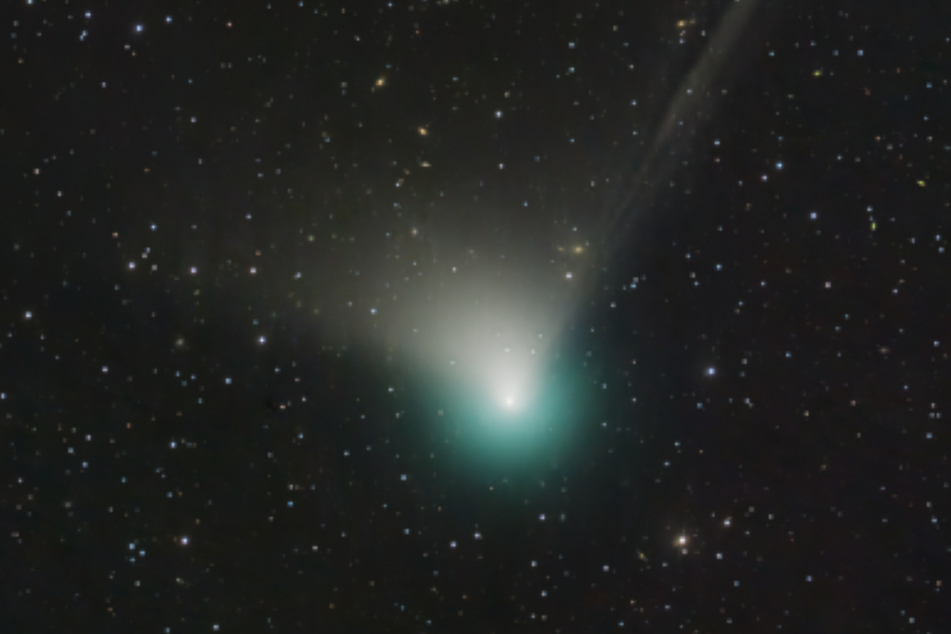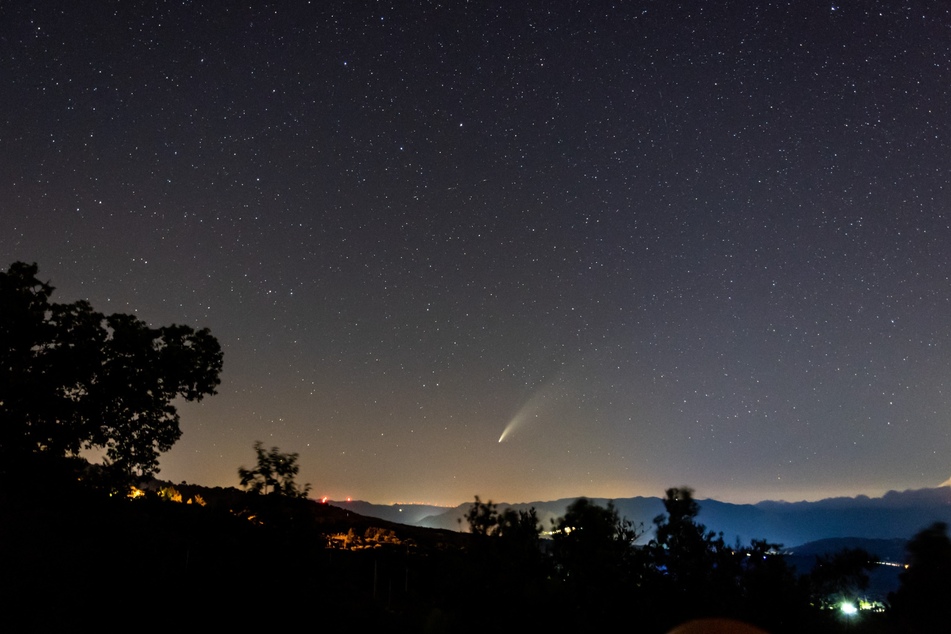How to catch a glimpse of a comet this January 2023
This year kicks off with a once-in-a-lifetime stargazing event! A comet named C/2022 E3 (ZTF) is about to streak through the sky in the Northern hemisphere, and you might be able to see its green tail with your own two eyes.

Get ready to try to spy, with your naked eye, a comet with a green glow streaking across the sky.
According to NASA, a newly discovered comet C/2022 E3 (ZTF) may be visible to the naked eye this January!
Scientists at the Zwicky Transient Facility on Palomar Mountain in California first spotted the comet in March 2022. At the time, it was in Jupiter's orbit.
As this massive snowball approaches the sun, and our planet, it heats up and spews gases, leaving a trail or a tail. That's what gives this powerful cosmic object its shape. Comets are known for their glowing core and flame-like tails that can stretch out behind them for millions of miles.
Comet C/2022 E3 (ZTF) will be closest to the sun on January 12. It'll then make its way past Earth on February 2, after which it will begin to dim, per NASA.
Don't worry about the comet getting too close for comfort! It'll pass us earthlings by at a distance of 26.4 million miles.
What you need to worry about is seeing this tiny streak of light, especially because it could be the only time it ever flies by!
Catching a glimpse of this comet is a once-in-a-lifetime stargazing event
According to NASA, comet C/2022 E3 (ZTF) will be visible throughout January from the Northern Hemisphere as it moves northwest.
This will probably be your one and only chance to see the comet with a mouthful of a name, as it may only make one pass by our planet.
Scientists aren't even sure if it has passed by our planet before, as they are still studying this new comet's trajectory.
But if it did fly by us before, it wasn't at all recent. Jon Giorgini, a senior analyst at NASA's Jet Propulsion Laboratory, told NPR: "If C/2022 E3 has ever passed through the solar system before, it would have last been seen in the sky more than 10,000 years ago."
What's more, NASA scientists aren't sure where the comet is headed.
It may get shot out of our solar system forevermore, so this is your chance to catch a very special glimpse.
How to catch a glimpse of the new comet

The sun is expected to supercharge comet C/2022 E3 (ZTF) with brightness around January 12 as the object draws near to the fireball.
It might be bright enough that you can see it with your own two eyes.
According to NASA, "Comets are notoriously unpredictable, but if this one continues its current trend in brightness, it'll be easy to spot with binoculars, and it's just possible it could become visible to the unaided eye under dark skies."
The best time to see it is in the predawn hours in the Northern Hemisphere until the end of January. After which it will be at its closest point to earth and visible from the Southern Hemisphere, but quickly dimming.
Stargazers who use binoculars or telescopes will have a better chance of seeing the rare speck of light, but anyone looking to see the special streak should make sure the skies are dark and unpolluted by city lights.
Cover photo: DAN BARLETT/ NASA
